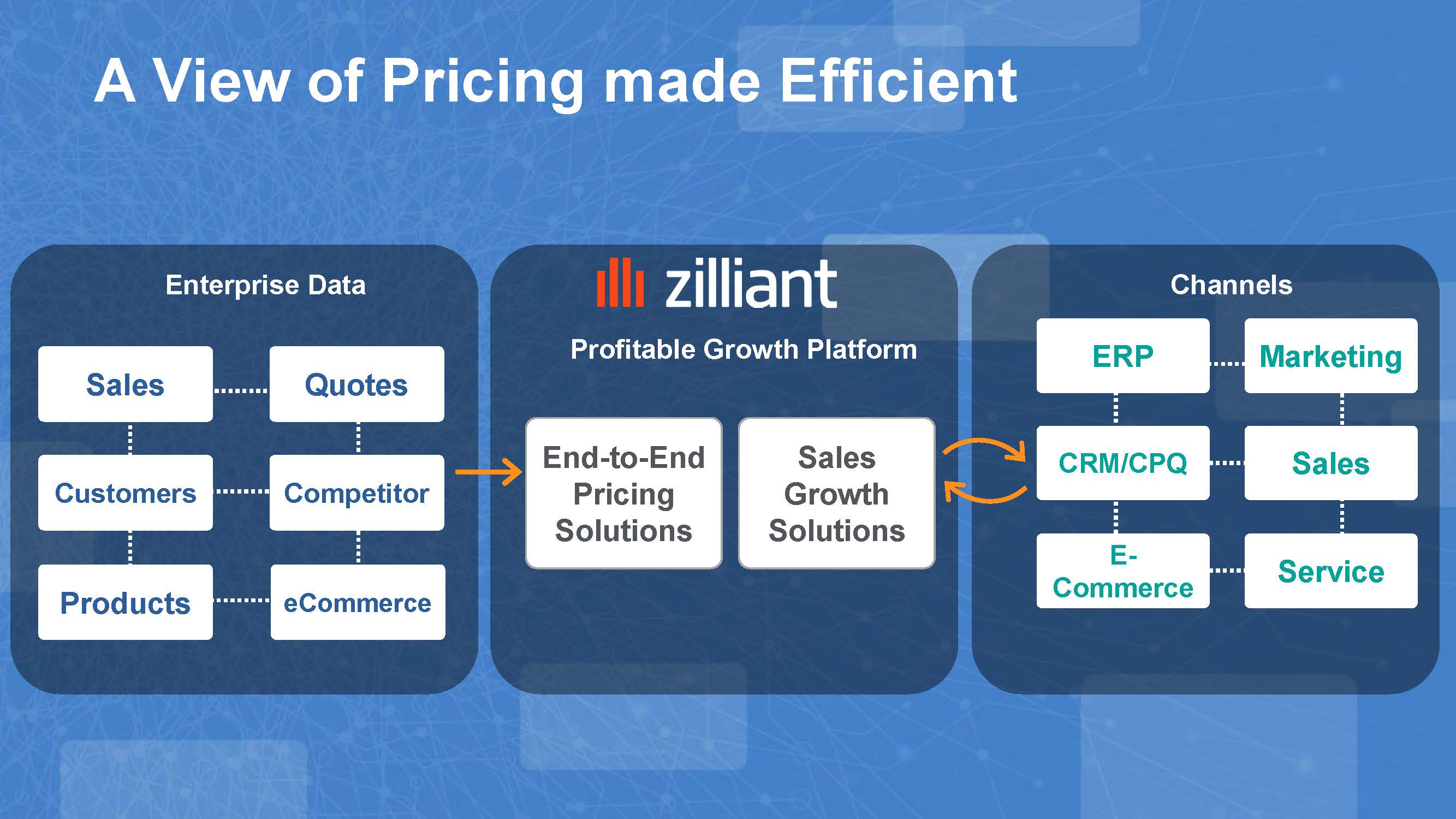Two functions at manufacturing organizations are prime for process improvement: selling and pricing. A closer look at the selling function reveals that despite reducing labor costs via transformational automation solutions, sales teams still manage large, antiquated portfolios. They are expected to increase their book of business while retaining current customers. Measuring sales reps, the way plant floor machinery is measured, with an overall equipment effectiveness (OEE) score, organizations quickly discover they are doomed to inefficient output. Sales teams are simply asked to handle too many accounts while being overloaded with information that lacks actionable direction.
Manufacturers and distributors with growing catalogs find the salesforce often lacks an in-depth knowledge of new products. As a result, they keep selling what they know at the expense of selling new products that may carry a higher margin or help expand share-of-wallet.
A lack of automated, data-driven, actionable intelligence virtually guarantees excessive customer churn. Much of this customer dissatisfaction stems from sales reps not knowing what their customers need and lack the time and tools to gain that understanding.
Since it is impossible for sales teams to know about every potential threat and growth opportunity within their accounts at all times, automatic identification of cross-selling opportunities and customers showing signs of defection is a great place to start.
Human analysis cannot sufficiently pinpoint which customers are at risk of switching to competitors, or prevent defection across a large set of accounts, identify the customers that should purchase a product and know which customers are most ready to purchase additional products. The right automation technology can dynamically surface hidden revenue opportunities at scale, within your customer base, for your sales teams.
Pricing is another manufacturing function that can be vastly improved with intelligent tools. Whether a customer decides to purchase online or direct, too often a "win-the-deal at any cost" strategy from a busy industrial sales leader starts a chain of cumbersome manual steps. Approaches such as data-driven calculation of the right price, or the use of streamlines automation tools for deal approval that do not rely on ad-hoc excel spreadsheets and email, are two proven areas where immediate benefits can be found.

Productive price management can be achieved with an application that enables price managers to establish, manage, and automate the pricing process quickly and easily. Best-practice solutions simplify the management of price lists, adjust and publish prices accurately, and roll them out efficiently throughout the organization.
In the same way that consultative selling reduces churn, when price managers spend more time on pricing strategy and less time on manual tasks, the results are significant for pricing teams, sales teams, and the business overall.
Measure the Impact of Price Changes on KPIs
Only when pricing managers build logic and calculations with spreadsheet-like formulas, can they also simulate a price change impact to KPIs (key performance indicators) such as revenue and profit margin with visual analytics before publishing prices. These features ensure accuracy and confidence in the prices delivered to the rest of the organization.
Automating the pricing management function allows teams to manage the entire lifecycle of creating, rolling out, and measuring a price change. By setting up an automated intuitive management solution, pricing teams schedule and automate updates to agreement lines affected by price changes, at scale. Pricing teams collaborate with sales to roll out changes that require review or approval with transparency for audits.
Full Integration with Advanced AI-driven Price Optimization
Within a pricing application, pricing managers have a choice. They can bring in pricing guidance that is calculated using either artificial intelligence (AI) price optimization, or a rules-based approach. This permits an organization to set pricing and leverage advanced pricing strategies and customer/order attributes.
The Automation and Integration of Pricing and Sales Managers
Spoon-feeding sales reps with accurate pricing and guided intelligence along with actionable insights translates to growing the average order size and setting up reorders of past items. It allows sales teams to accelerate the learning curve of new reps, by showing them what products they should be selling and at what price to specific customers and why. For existing reps, guided sales, and pricing intelligence is automated so they can focus on selling.
Price optimization and sales management solutions that maximize the lifetime value of B2B customer relationships are straightforward despite the underlying complexity. These solutions turn disparate data into seamless actionable intelligence. The intelligence is then delivered within existing field sales and service rep workflows, CRM applications, quoting tools, eCommerce channels, and more. Actionable intelligence accelerates profitable growth.
This article was first published on AutomationMedia.com
